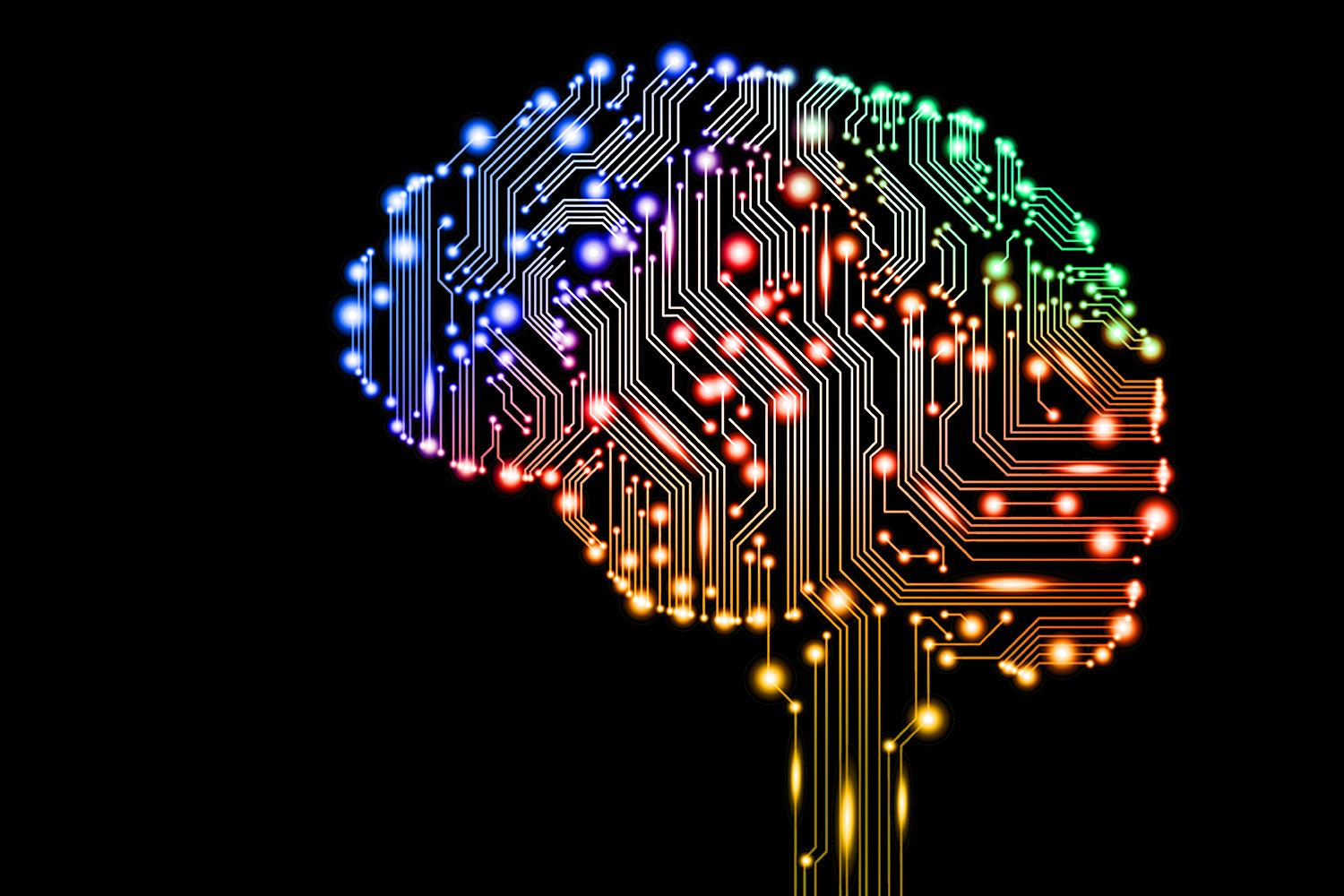AI is entering Financial Services by automating processes, identifying patterns by crunching Big Data, and interacting with humans through voice. What areas of Financial Services will NOT be affected, and how will consumers buy banking and insurance services in the future?
Artificial Intelligence surrounds us so seamlessly interwoven in our daily lives that we hardly pause to contemplate it during the day.
Most of us carry around in our pockets our very own artificial intelligence assistants: iPhone´s personal servants “Siri”, Windows’ “Cortana” and Android’s “Google Now”. All assistants communicate with us through interpreting and “understanding” natural language.
Amazon and Netflix recommend things to us to read or watch based on our (past) preferences, gender, age, and what else.
And concerning social media, just the very tip of the iceberg: Facebook suggests you to hook up with class mates from the 5th grade, LinkedIn recommends positions based on your experience and education, and companies like Cxense presents digital advertisements customized for each of us.
However, expect the everyday use of artificial intelligence to reach far beyond social media and e-commerce! World Economic Forum finds that almost half of 800 top executives expect an AI machine on the company board within 2025.
What could be considered milestones in the development of artificial intelligence?
Already back in 1964 MIT created the simulation of a psychotherapist, producing “dialogue” with humans. Apparently the program with its follow-up questions in the jargon of a therapist caused humans to open emotionally up, forgetting altogether they were interacting with a machine.
IBM’s DeepBlue chess program defeated the reigning world champion back in 1997. One of its main strengths being its processing power capable of evaluating 200 mill positions every second.
Watson (IBM) brought us another milestone in 2011, winning the quiz show Jeopardy over two champions. Watson brought more than just data search speed and calculative power to the table, but also the “ability” to interpret/reason questions in common language.
Furthermore, Google’s AlphaGo marked yet another leap in the development of artificial intelligence when defeating the world’s top “Go” player during late 2015. Simple calculative power was insufficient to win at Go due to the game’s tremendous alternate gaming strategies , cognitive analytics and machine learning were an essential part of AlphaGo’s victory formula.
The enablers for Artificial Intelligence,
How did we end up where we are today, surrounded by “smart machines” which we consider helpful most of the time, but on the rare occasion also giving us bad advice?
In their book “Second Machine Age”, writers Brynjolfsson and McAfee bring forward three factors that have enabled the development and practical usage of artificial intelligence in our daily lives:
- (Exponential) growth in data processing capacity (Moore’s Law) and machine learning
- Digitization of information: Digital maps being used by GPS devices is one example, Wikipedia (a digital disruption to paper based encyclopedias!) is another. Ponder for a second about the immense amount of information on the web (and tools ready to extract the topics of interest) two mouse clicks away!
- “Recombinant” innovation: The ability to “package existent innovations into new products and services. The car maker Henry Ford was in his time a disruptor, mainstream horse transportation being replaced by the affordable car T-Ford for the population masses: “I invented nothing new, I simply assembled the discoveries of other men behind whom there was centuries of work”. (meaning Henry Ford applied to the T-Ford (1908) the already existing innovations assembly line (1867), interchangeable parts (1801) and the automobile (1885).


Application of AI in Financial Services
Artifical Intelligence affects several of the areas constituting Financial Services, varying in impact and disruptive capability. Both well established banking conglomerates as well as “FinTech” newcomers are applying the AI as part of their customer services.
Payments: Perhaps the area least affected by AI, but strongly impacted by other disruptive technologies. (Did someone mention blockchain?) However, payments processed through use of the newest voice assistant intelligence, “Viv” exists. (starts 5:00 min out in the video). Artificial Intelligence is consequently applied in one way as the “front layer” for payment processing. In India the “digibank” product by bank DBS contains AI and natural language recognition.
Insurance: Unquestionably, IoT will force its way through as data capture devices, resulting in possible “pay-per-use” insurances brought to market, customized to you as an individual: Health insurance crunching data from your FitBit bracelet; rewarding lower premiums to people getting their “30 minutes of exercise”/walking 10.000 steps every day…? A few examples of companies combining IoT and “Big Data & Analytics”, bringing new insight into insurance risk as well as possible “pay-per-use” services: MyDrive, metromile and oscar.
Deposits & Lending: “Robots” have been put to good use by processing loan applications. BN Bank from Norway experienced a 3000 loan application stacking up, with a 15 weeks’ processing backlog. Solution: Enter a robot, inputting data and thus initiating the application process with twice the speed of a human. Result: Loan application processing time down from 15 weeks to one day…. Another example is LendingClub as a peer-to-peer (P2P) lending platform, offering (online) risk rating and credit worthiness on the spot. Kreditech offers credit score, underwriting and payout to people with little or no credit history. Kreditech achieves this through the use of data collected through credit applicants’ smart phones: Key words are automation, Big Data and algorithms.
Capital Raising: The sharing economy clearly impacts this sector of the Financial Services, with “crowdfunding” and P2P platforms emerging. The new platforms assumingly contains (highly) automated Front-Middle-Back office procedures, but the usage of AI for platforms like Seedrs, Crowdcube and Syndicateroom are not so explicit and visible to the end user. Incumbent banks are adopting these new capital sourcing channels as well. Nordea and Spb1 both have/are planning to launch their own crowdfunding platforms.
Investment Management: This is perhaps the area within Financial Services where application of AI and Robotics have come farthest. Betterment and wealthfront applies tools for automated investments in assets adapted to your risk profile/personal preferences and future goals. Norwegian “startup” Fronteer Solutions hopes to achieve a premium (“smart beta”) in index fund management through crunching big numbers and applying artificial intelligence, searching for undervalued companies.
“Most of us can easily foresee that AI will become more and more widespread within the Banking area”
What about the future of AI and Robotics within the Financial Services?
Most of us can easily foresee that AI will become more and more widespread within the Banking area; taking on more tasks, as well as becoming capable of handling more and more complex and “decision making” tasks. (Remember “Viv” from earlier?). Resulting from this (automation), Citigroup predicts a possible 30% reduction in the global Financial Services workforce by 2025.
How about the ecosystem for Financial Services, will it change? Well, there is little doubt that the threat of new entrants (telecom, e-commerce, etc.) into Banking services is increasing for incumbent banks. A more intense rivalry between new and old Financial Services suppliers opens the door for getting the upper hand by applying the “right” AI, and perhaps becoming the “preferred” catalyst between end users’ smartphone/wearable, and the supplier of the Banking Service? Smart phone Apps, along with web sites once the disruptor of physical bank branches, now about to be disrupted themselves…., by ChatBots and other enablers for Conversational Commerce that could be determinant for what Financial Services by which vendor that the end user will buy.
Biggest 4 messenger apps (WhatsApp, FB Messenger, WeChat, Viber) have now more users than biggest 4 social media. Perhaps is a glimpse of the future Financial Services ecosystem a ChatBot in combination with a messenger app similar to Chinese Alipay offerings: Mobile payment, wealth management, loans, insurance and savings account.









